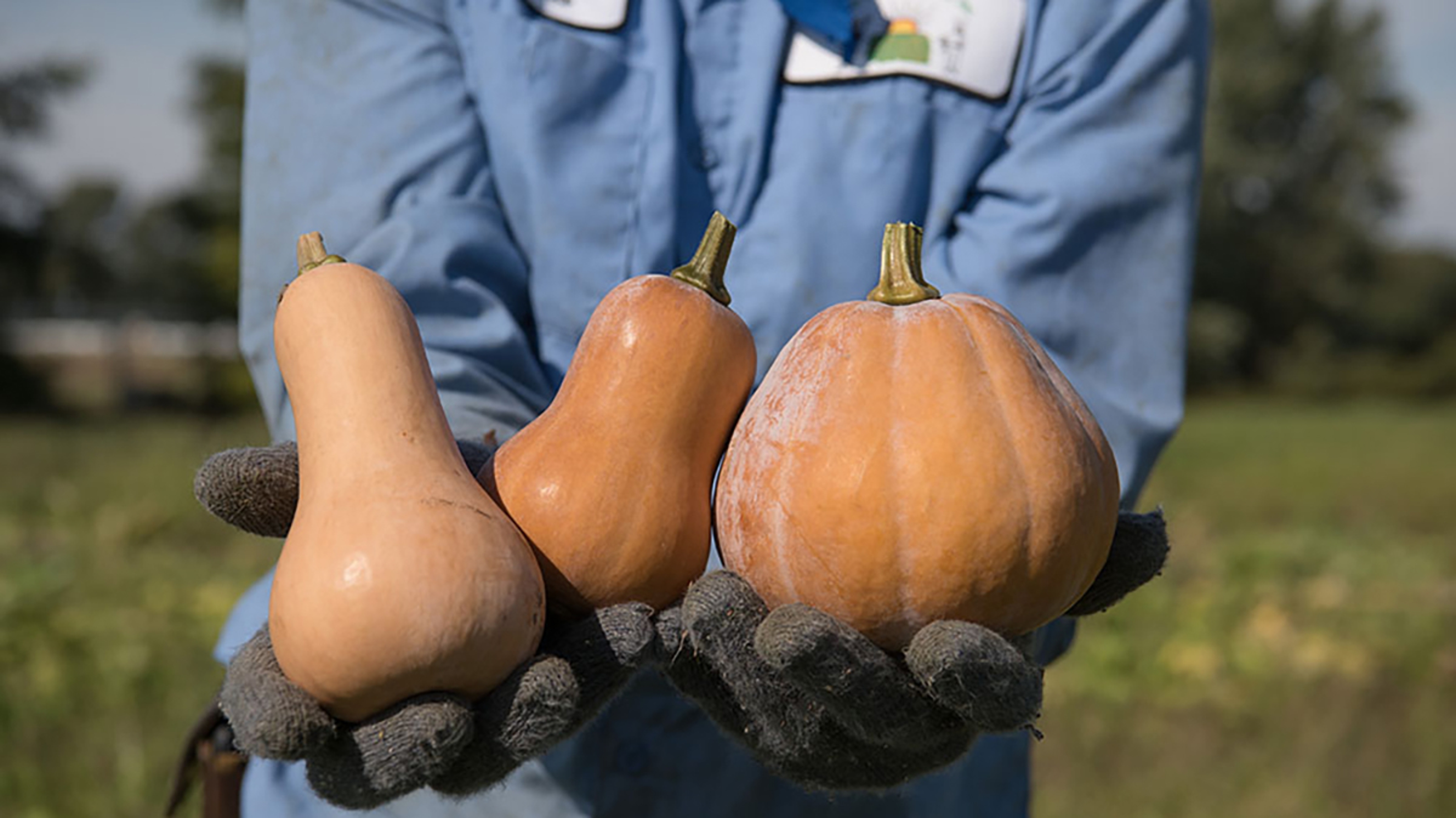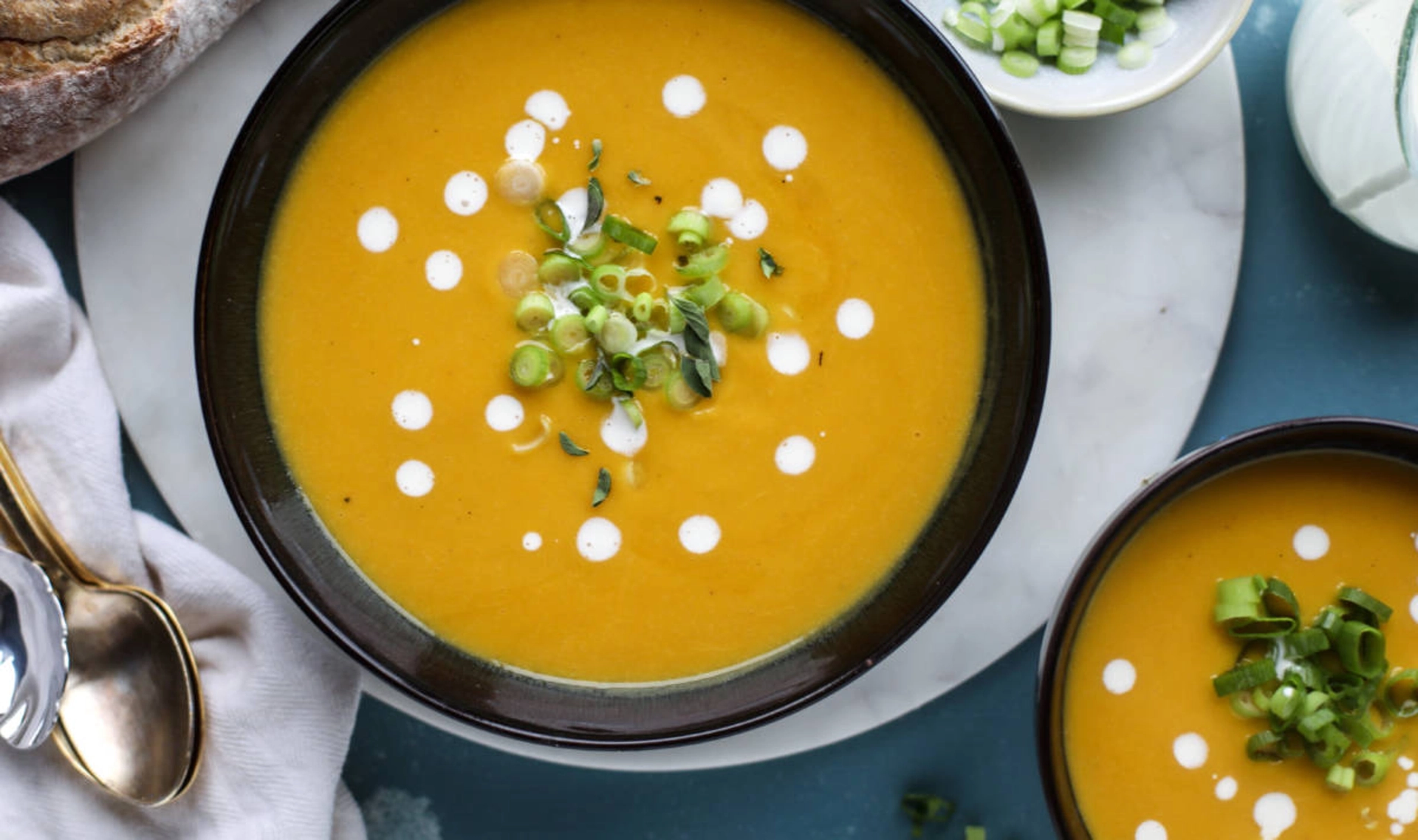October's Veg of the Month: Fall Squash
Whether raw or roasted, fall squash needs to be on your dinner menu.
Oct 01, 2024
As the vibrant hues of fall leaves emerge, so, too, do the meticulously nurtured crops that grace the fields at The Chef's Garden in Huron, Ohio. "You can feel the shift in the air," Farmer Lee Jones says. "And, come October, our bodies switch gears from summer bounty to fall — and the more in tune you are with [that change], the more it will tell you what you're hungry for."
And for us, that means a delectable, sensational, satisfying mix of fall squash.

Farmer Lee's emphasis on cover cropping, crop rotation, and minimal tillage ensures that these autumn gems are nourished by nutrient-rich soil and sustained by a harmonious ecosystem. This careful cultivation translates into squash that bursts with deep honey and bronze colors, intensified sweet and nutty flavors, and unmatched freshness.
The Kojinut squash is just one of the exciting varietals grown using Farmer Lee's regenerative farming techniques, and is one of his favorites. "You can eat the entire squash, including its delicate, nutritious skin — no need to peel it!" he exclaims. "We have fun varieties, such as a white acorn or 'mashed potato' squash — once cooked and mashed, add a bit of butter for an incredible, creamy texture."
And since some butternut varieties can grow enormously — taking, according to Farmer Lee, "three men and a boy to cut them in half" — he grows plate-sized butternut squash (phew!). These smaller butternuts are terrific roasted and paired with other fall flavors that are a feast for our senses, such as apple cider, sage, and browned butter.
"If you haven't been eating fall squash, now is the time!" Farmer Lee declares. "It's what Mother Nature intended."
What makes Chef's Garden fall squash special?
Squash is rich in vitamin B6, which has been linked to helping people avoid depression. And there's enough of the essential nutrient vitamin A in a one-cup serving of butternut squash to meet, or even exceed, a person's daily requirements.
The gourd's minerals and antioxidants, such as beta-carotene, protect our bodies from cancer and heart disease, and enhance and improve skin and eye health. Even the palms-sized 898 butternut squash varietal, which are grown from Row 7 Seed Company seeds, packs a powerful punch of nutrition, along with its sweet and nutty flavor.
Yet, the impact of The Chef's Garden's farming practices extends beyond personal health, resonating deeply with the planet's ecological well-being.
How to use fall squash
"Simple preparation, nutritional potency, and deep flavor make fall squash magical," Farmer Lee explains.
Here are some cooking tips to maximize flavor and texture: Moist-heat cooking methods, such as steaming, yield a mildly sweet, creamy flesh, whereas dry-heat cooking methods, such as roasting, bring out its caramel flavor and make the flesh fluffier.
An easy preparation for any squash varietal is to cut off the stem, then halve it lengthwise, scoop out the seeds, and roast flat-side down in a 375 degree oven until the flesh is tender, about 50 minutes. Add crunch by topping simple roasted squash with toasted seeds. Roast or purée fall squash to create a Creamy Pear and Butternut Soup, and let its complex flavors shine in a Curried Lentils and Rice stew.
Looking for a side dish? Look no further than the hearty Farmer's Market Vegetable Ciambotta, a dish that allows for lots of seasonal vegetable improvising.
Enjoy Squash Toast topped with a poached egg instead of avocado for breakfast.
To enjoy squash raw, use a vegetable peeler to make ribbons and add to a fall salad with sweet, dried cranberries, crunchy pecans, and spicy blue cheese for a symphony of textures and flavors. Or add peeled, raw squash to a crudité board and serve with various fun dips.
How to care for and store fall squash
If your squash is fresh from the garden, remove any dirt or debris by cleaning it with a damp cloth and drying it thoroughly before storage.
Because of fall squash's hard skin, these varietals can be kept on a table or kitchen counter at room temperature for several weeks, with some varieties lasting several months. The ideal condition for storing fall squash for up to six months is a well-ventilated, 50-degree spot. Do no refrigerate it unless cut. Once squash is cut, wrap it in plastic or store it in a resealable container for a few days.
.svg?q=70&width=384&auto=webp)



















